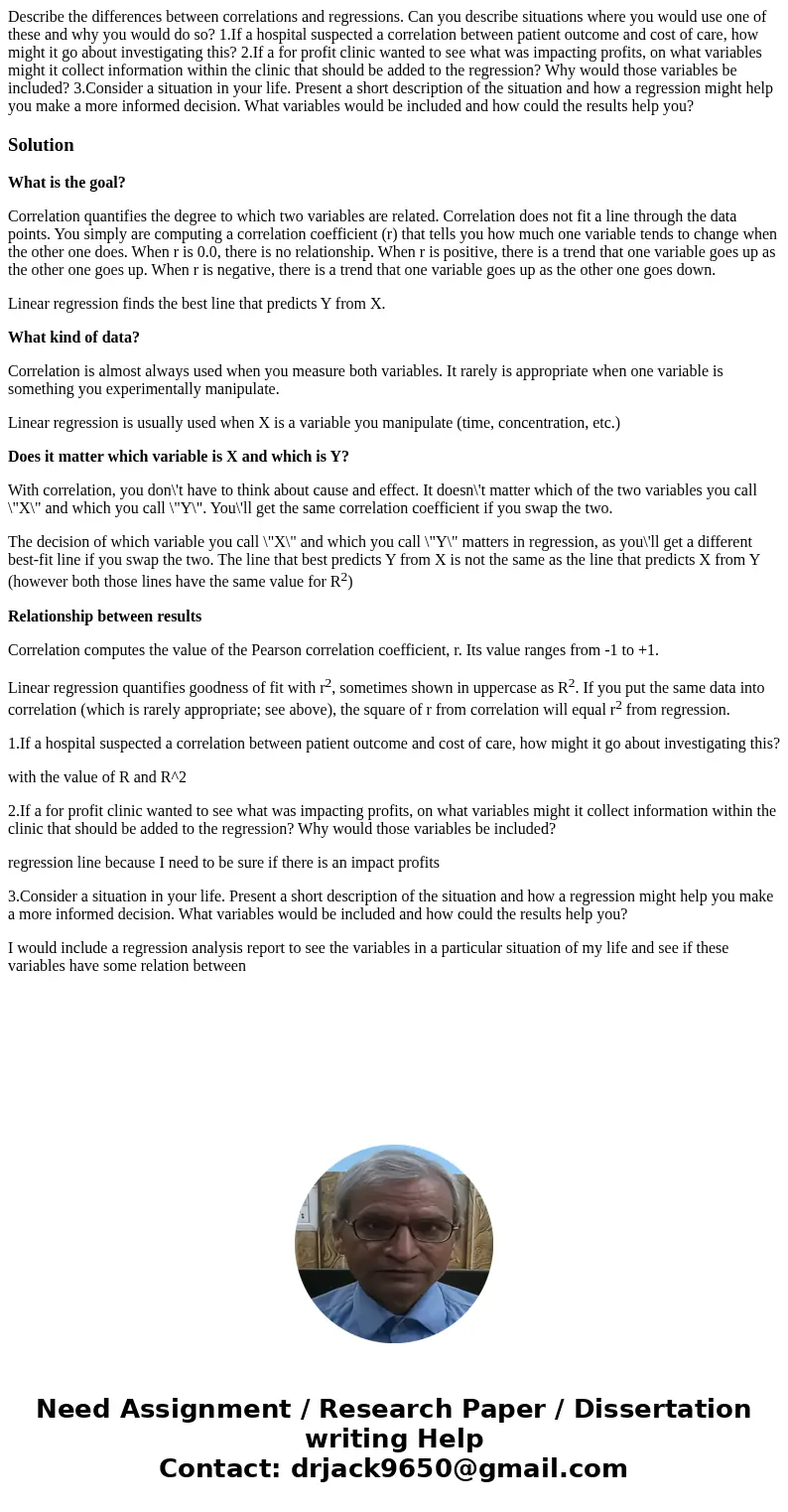Describe the differences between correlations and regression
Describe the differences between correlations and regressions. Can you describe situations where you would use one of these and why you would do so? 1.If a hospital suspected a correlation between patient outcome and cost of care, how might it go about investigating this? 2.If a for profit clinic wanted to see what was impacting profits, on what variables might it collect information within the clinic that should be added to the regression? Why would those variables be included? 3.Consider a situation in your life. Present a short description of the situation and how a regression might help you make a more informed decision. What variables would be included and how could the results help you?
Solution
What is the goal?
Correlation quantifies the degree to which two variables are related. Correlation does not fit a line through the data points. You simply are computing a correlation coefficient (r) that tells you how much one variable tends to change when the other one does. When r is 0.0, there is no relationship. When r is positive, there is a trend that one variable goes up as the other one goes up. When r is negative, there is a trend that one variable goes up as the other one goes down.
Linear regression finds the best line that predicts Y from X.
What kind of data?
Correlation is almost always used when you measure both variables. It rarely is appropriate when one variable is something you experimentally manipulate.
Linear regression is usually used when X is a variable you manipulate (time, concentration, etc.)
Does it matter which variable is X and which is Y?
With correlation, you don\'t have to think about cause and effect. It doesn\'t matter which of the two variables you call \"X\" and which you call \"Y\". You\'ll get the same correlation coefficient if you swap the two.
The decision of which variable you call \"X\" and which you call \"Y\" matters in regression, as you\'ll get a different best-fit line if you swap the two. The line that best predicts Y from X is not the same as the line that predicts X from Y (however both those lines have the same value for R2)
Relationship between results
Correlation computes the value of the Pearson correlation coefficient, r. Its value ranges from -1 to +1.
Linear regression quantifies goodness of fit with r2, sometimes shown in uppercase as R2. If you put the same data into correlation (which is rarely appropriate; see above), the square of r from correlation will equal r2 from regression.
1.If a hospital suspected a correlation between patient outcome and cost of care, how might it go about investigating this?
with the value of R and R^2
2.If a for profit clinic wanted to see what was impacting profits, on what variables might it collect information within the clinic that should be added to the regression? Why would those variables be included?
regression line because I need to be sure if there is an impact profits
3.Consider a situation in your life. Present a short description of the situation and how a regression might help you make a more informed decision. What variables would be included and how could the results help you?
I would include a regression analysis report to see the variables in a particular situation of my life and see if these variables have some relation between

 Homework Sourse
Homework Sourse